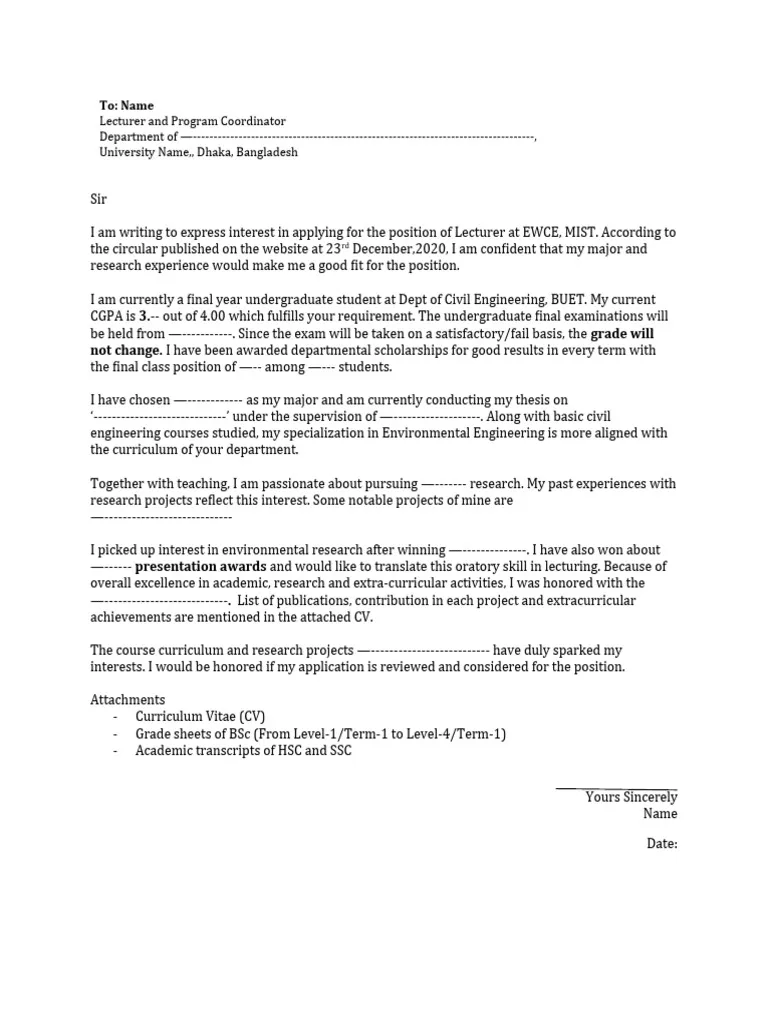What Makes a Stellar Eligibility Worker Cover Letter
A stellar eligibility worker cover letter is more than just a formality; it is your first impression on a potential employer. It’s your chance to showcase your skills, experience, and personality, setting you apart from other applicants. A well-crafted cover letter can significantly increase your chances of landing an interview. It should be tailored specifically for the role, highlighting your relevant qualifications and demonstrating your understanding of the job requirements. The best cover letters are clear, concise, and engaging, providing a compelling reason for the hiring manager to consider you for the position. They showcase not just what you’ve done but how you can contribute to the organization’s success.
Highlighting Relevant Skills and Experience
The eligibility worker role requires a specific set of skills and experiences. Your cover letter should emphasize these, directly addressing the job description. Skills such as attention to detail, strong communication abilities (both written and verbal), proficiency in data entry, and the ability to work with various computer software are crucial. Experience in customer service, case management, or any similar field should also be highlighted. Provide concrete examples of how you’ve used these skills to achieve positive outcomes in previous roles. This might include managing a high volume of applications, accurately assessing eligibility, or effectively communicating with clients and colleagues. Remember to quantify your achievements whenever possible to demonstrate the impact of your work.
Understanding the Eligibility Worker Role
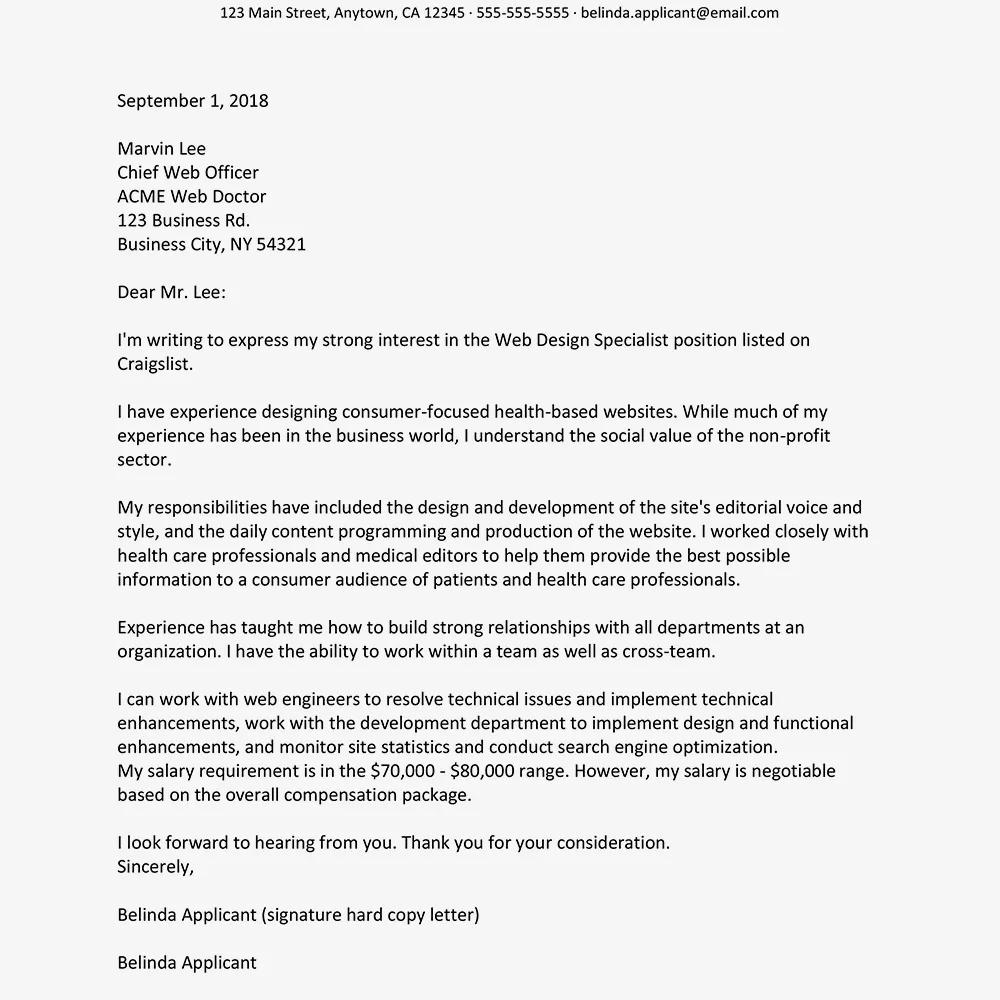
Before writing your cover letter, it is essential to have a clear understanding of the eligibility worker role. Eligibility workers are responsible for determining whether individuals or families qualify for public assistance programs, such as food stamps, Medicaid, or housing assistance. They assess applications, gather necessary documentation, conduct interviews, and make decisions based on established guidelines. Understanding the nuances of this role, including the importance of accuracy, confidentiality, and compliance with regulations, is critical. Your cover letter should demonstrate this understanding by addressing these aspects and showing your commitment to upholding ethical standards and providing excellent service.
Key Responsibilities of an Eligibility Worker
Eligibility workers handle a variety of responsibilities. These include reviewing applications for completeness and accuracy, verifying information through various sources, and conducting interviews to gather additional details. They must stay up-to-date with changing regulations and program guidelines. They are expected to maintain detailed records and documentation, often using specialized software. Moreover, they often act as a point of contact for clients, providing information and support. Highlighting your experience in any of these areas will strengthen your cover letter. It is important to emphasize your ability to manage multiple tasks efficiently while maintaining accuracy and providing excellent customer service.
Tailoring Your Cover Letter for the Position
Generic cover letters are easily spotted and often discarded. Tailoring your cover letter demonstrates that you have taken the time to understand the specific requirements of the job and the needs of the employer. Carefully review the job description, identifying the key skills, qualifications, and experiences that are most important. Customize your letter to address these aspects directly. This might involve rearranging your experience, emphasizing certain accomplishments, or using keywords from the job description. By demonstrating that you have the specific qualifications the employer is seeking, you greatly increase your chances of securing an interview.
Researching the Employer and the Role
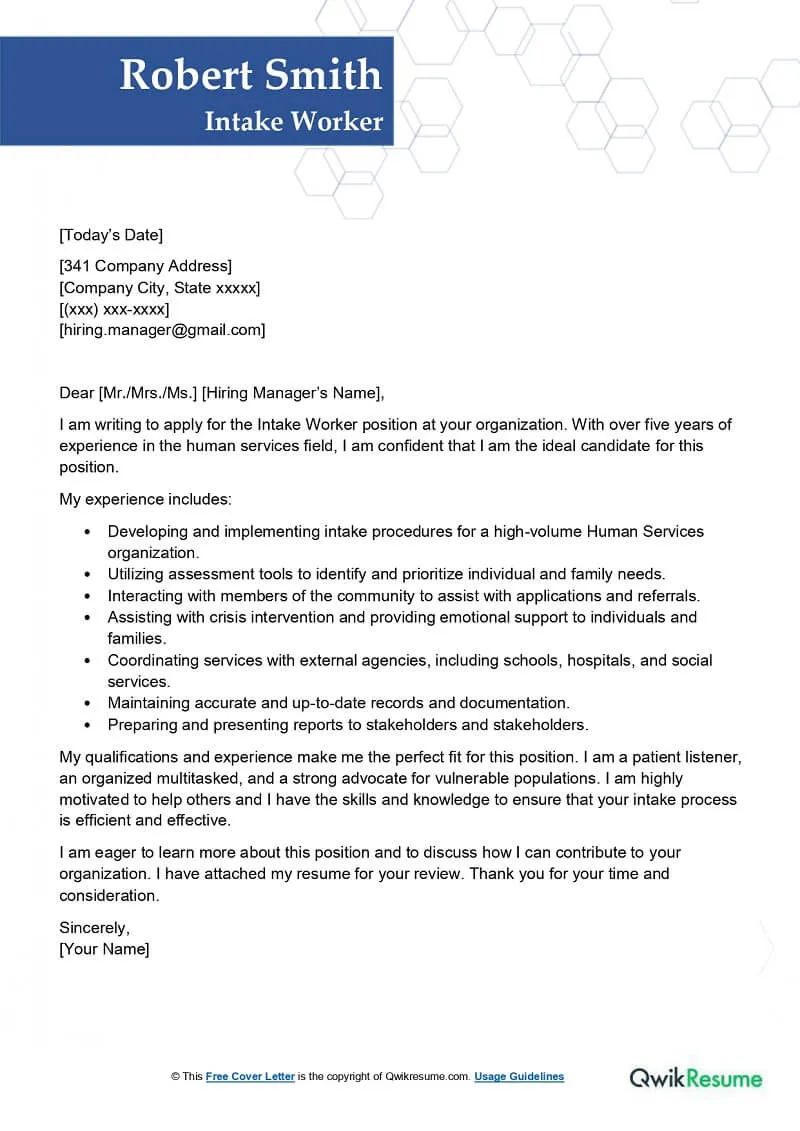
Before you begin writing, conduct thorough research on the employer and the specific eligibility worker role. Understanding the organization’s mission, values, and recent activities will help you tailor your cover letter. Visit the company website, read news articles, and check social media to gain insights into the workplace culture and the type of work they do. This information can be used to express your interest in working for that particular organization and to highlight how your skills and experience align with their goals. It’s also a good practice to research the specific programs the employer administers to better understand the requirements of the role.
Structuring Your Cover Letter Effectively
A well-structured cover letter makes it easy for the hiring manager to quickly grasp your qualifications. Your letter should include a clear header with your contact information, the date, and the employer’s contact information. A professional salutation, such as “Dear Mr./Ms. [Last Name],” sets a respectful tone. The body of the letter should be divided into three or four paragraphs. The first paragraph should express your interest and state the position you are applying for. The second paragraph should showcase your relevant skills and experience, providing specific examples and quantifiable achievements. The third paragraph can discuss your cultural fit and interest in the organization. The closing should reiterate your interest, include a call to action, and thank the reader for their time and consideration.
Header and Contact Information
Start your cover letter with a clear header. This should include your name, address, phone number, and email address. Ensure your email address is professional. Below your contact information, include the date. Then, add the employer’s contact information, including the hiring manager’s name (if available), their title, and the company’s address. Properly formatting this information is crucial, as it shows attention to detail and professionalism.
Professional Salutation
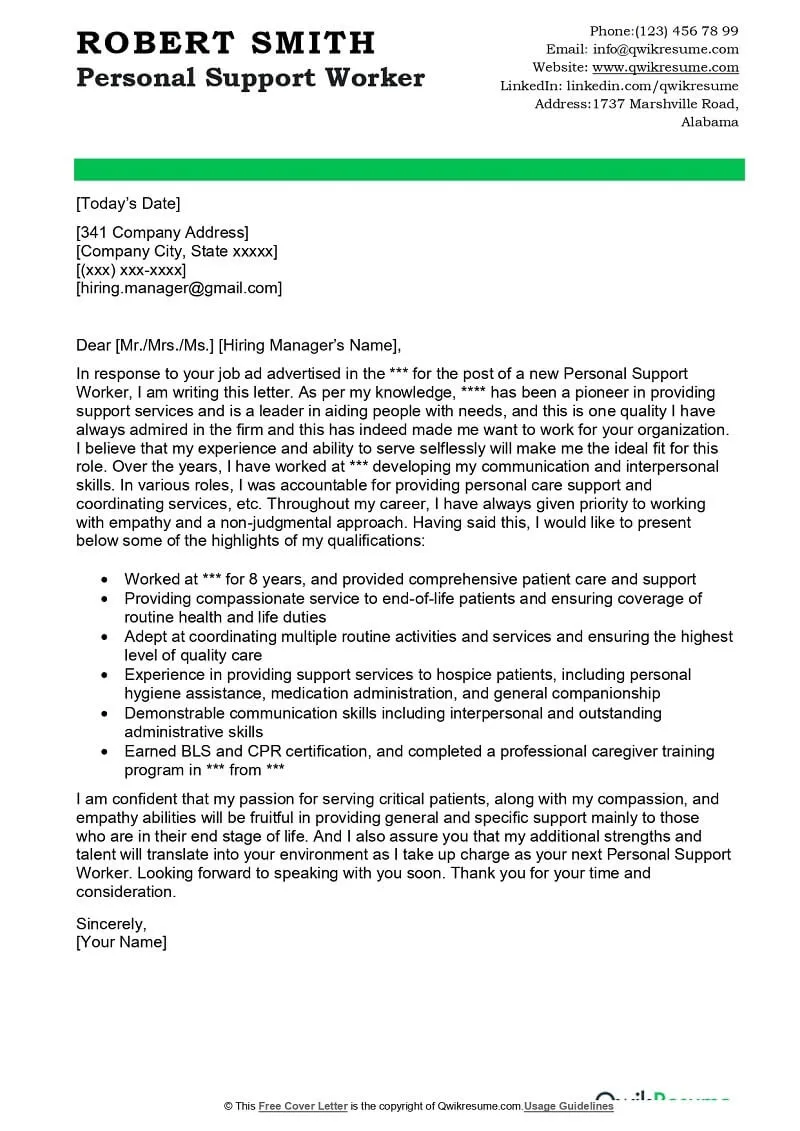
Begin your cover letter with a professional salutation. If you know the hiring manager’s name, use “Dear Mr./Ms. [Last Name].” This personal touch shows that you have taken the time to research the organization and the role. If you are unsure of the hiring manager’s name, a general salutation like “Dear Hiring Manager” is acceptable. Avoid casual salutations such as “Hi” or “Hello” as they might come across as unprofessional. Always ensure you address the correct person, and double-check the spelling of their name.
Body Paragraph 1: Expressing Interest and Value
The first paragraph should clearly state your interest in the eligibility worker position and how you learned about the opportunity. Mention the specific role and where you saw the job posting. Briefly explain why you are interested in the position and the organization. Expressing your enthusiasm for the role sets a positive tone. Highlight your understanding of the organization’s mission or the services they provide. Indicate what value you can bring to the role and the organization, setting the stage for the rest of your cover letter.
Body Paragraph 2: Showcasing Skills and Accomplishments
This is the core of your cover letter, where you showcase your skills and accomplishments. Provide specific examples from your previous experiences that directly relate to the eligibility worker role. Mention your ability to assess eligibility, process applications accurately, and communicate effectively with clients. For each example, explain the situation, the actions you took, and the results you achieved (using the STAR method – Situation, Task, Action, Result). Quantify your achievements whenever possible. For instance, you might mention how you improved processing times or reduced errors.
Providing Specific Examples of Achievements
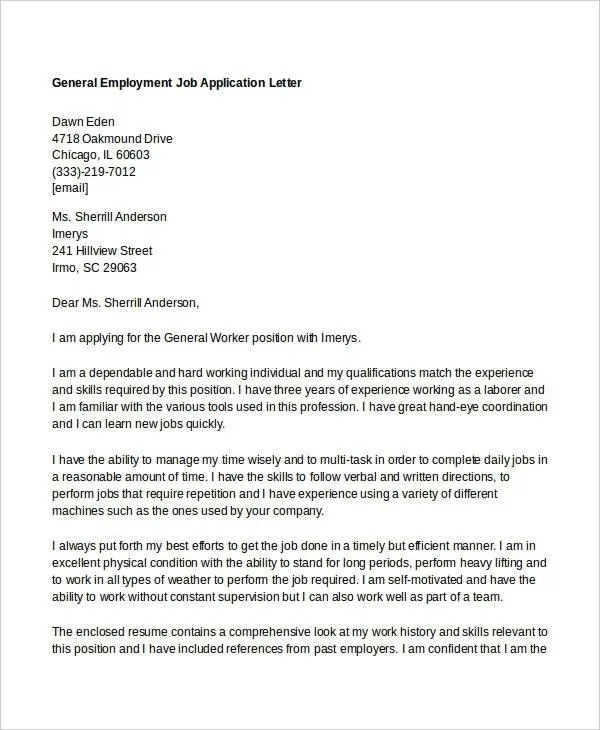
Give concrete examples of your achievements. Instead of just stating that you have strong communication skills, describe how you used those skills to successfully resolve a complex client issue or to effectively train new staff. Show, don’t just tell. For instance, detail how you streamlined an application process, implemented a new system that reduced errors, or exceeded performance targets. The more specific and detailed you are, the more compelling your cover letter will be. These examples will make your skills and experience more tangible to the hiring manager.
Quantifying Your Accomplishments
Quantifying your achievements adds credibility to your claims and demonstrates the impact of your work. Use numbers to illustrate your successes. For example, instead of saying you managed a large caseload, state that you managed a caseload of 150 clients with a 98% accuracy rate. Or, instead of saying you improved efficiency, state that you reduced processing time by 20%. Numbers make your accomplishments more tangible and easier for the hiring manager to understand and appreciate. Always include relevant metrics to show the impact of your work on past employers.
Body Paragraph 3: Demonstrating Cultural Fit
In the third paragraph, demonstrate your understanding of the organization’s culture and values. Explain why you are a good fit for the organization and why you are excited about the opportunity. Highlight any shared values or goals between you and the organization. Mention the ways your personality, work style, or experience align with the organization’s mission or approach to serving its clients. If you are familiar with the organization’s past work, mission statements, or goals, incorporate that knowledge to further demonstrate your interest and fit. Show the hiring manager that you’re not just looking for a job, but are also invested in their mission.
Closing the Cover Letter
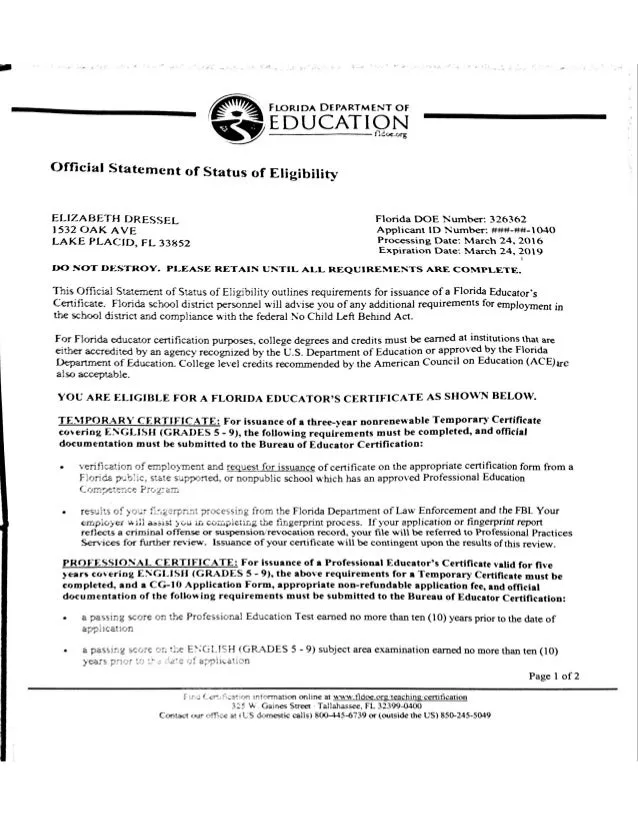
The closing paragraph should reiterate your interest in the position and thank the reader for their time and consideration. Express your enthusiasm for the opportunity to learn more about the role and the organization. A strong closing paragraph includes a call to action, such as stating that you look forward to hearing from them soon or that you are available for an interview at their earliest convenience. Always end with a professional closing, such as “Sincerely,” or “Respectfully,” followed by your full name.
Call to Action
A call to action encourages the hiring manager to take the next step, making it more likely that you’ll be contacted for an interview. State your interest in discussing your qualifications in more detail. Include a clear call to action, such as expressing your eagerness to hear from them, or state that you are available for an interview at their earliest convenience. This is your chance to make a final, positive impression and to signal your keen interest in the position.
Proofreading and Editing Your Cover Letter
Before submitting your cover letter, proofread it carefully for any errors in grammar, spelling, or punctuation. A well-written cover letter reflects professionalism and attention to detail. Read it aloud to catch any awkward phrasing or unclear sentences. Ask a friend or colleague to review your cover letter as well. Fresh eyes can often spot errors that you might miss. Proofreading is a critical step, and a single mistake can undermine your entire application. Ensure your formatting is consistent and easy to read.
Common Mistakes to Avoid
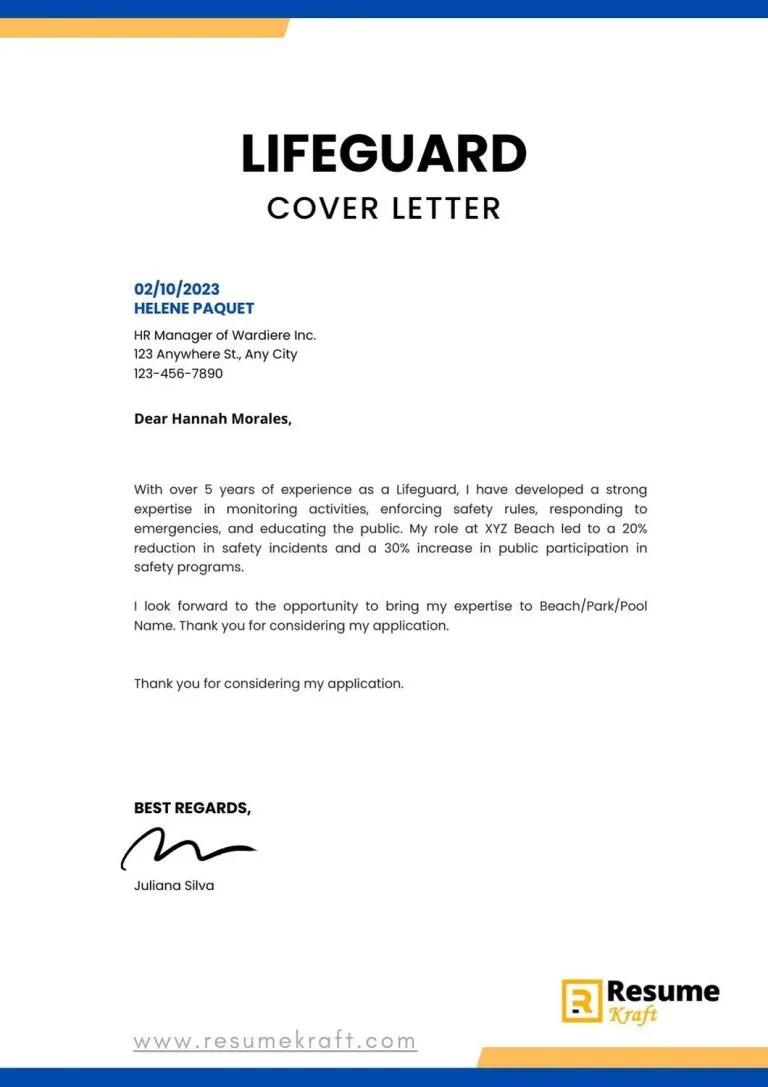
Several common mistakes can significantly weaken your eligibility worker cover letter. Being aware of these mistakes and actively avoiding them will improve your application. Pay attention to the details and ensure your letter meets the employer’s requirements.
Grammar and Spelling Errors
Grammar and spelling errors can immediately damage your credibility. Proofread your cover letter carefully, using a grammar checker and spell-checker. However, don’t rely solely on these tools; a human review is essential. Ensure your sentences are clear and concise. Unintentional errors show a lack of attention to detail, which is essential for an eligibility worker. Reviewing your document multiple times reduces the chances of errors.
Generic Cover Letters
Avoid sending a generic cover letter. These are easily recognizable by employers and often result in the application being overlooked. Tailor each cover letter to the specific job description and organization. Show the employer that you have taken the time to understand their needs and requirements. Addressing the specific qualifications sought in the job posting indicates your sincere interest.
Ignoring the Job Description
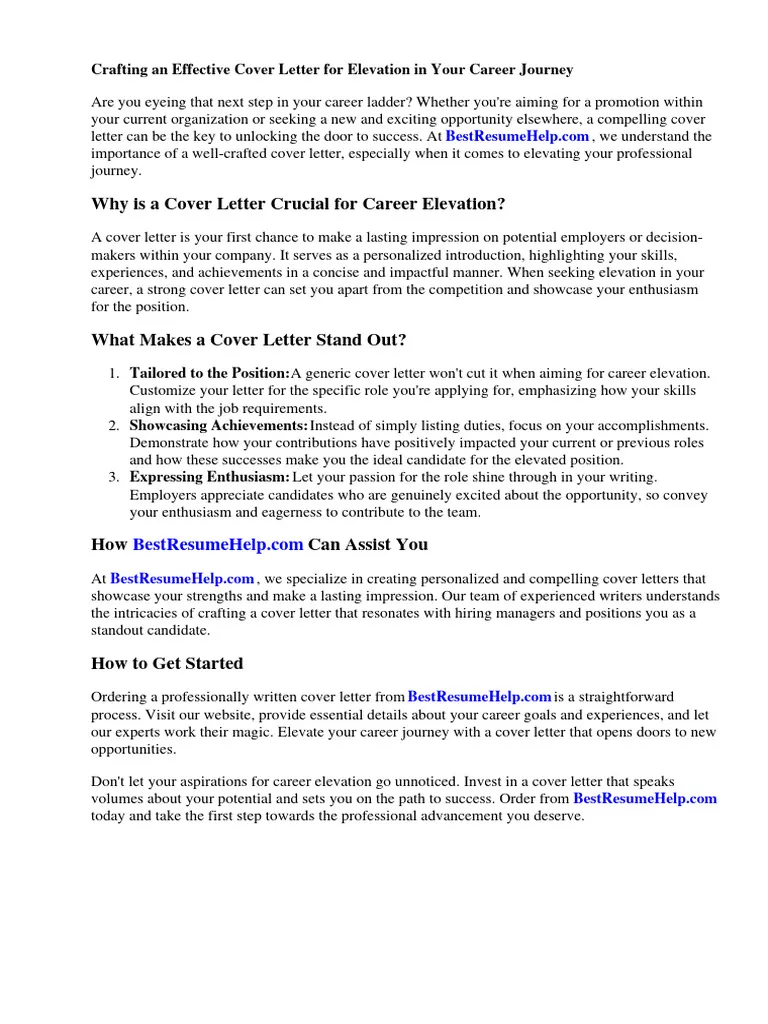
Failing to address the requirements listed in the job description is a common mistake. Carefully review the job description and highlight the skills, experience, and qualifications that the employer is seeking. Your cover letter should directly address these points, demonstrating how you meet their needs. Ignoring the job description can signal to the hiring manager that you haven’t properly reviewed their requirements or are not a good fit for the role.
Formatting and Presentation
Pay close attention to the formatting and presentation of your cover letter. Use a clear, easy-to-read font and maintain consistent formatting throughout the document. Make sure your cover letter is well-organized, with clear headings and paragraphs. Ensure your cover letter is the right length (typically one page). Poor formatting will make your letter harder to read and will detract from your message. The overall look should be neat, clean, and professional.
Using Action Verbs and Keywords
Use action verbs and keywords from the job description to make your cover letter more compelling and relevant. Action verbs will help you showcase your achievements, while keywords will show the hiring manager that you understand the role’s requirements. The use of relevant language and action verbs helps make your experience more tangible.
Keywords from the Job Description
Identify the keywords used in the job description and incorporate them naturally into your cover letter. These keywords often represent the essential skills, qualifications, and responsibilities of the role. Using these keywords will help your cover letter get noticed by applicant tracking systems (ATS) and will demonstrate to the hiring manager that you have the required qualifications. Make sure you use the keywords organically and not in a way that seems forced or unnatural. The use of keywords will indicate that you are a good match for the position.
Action Verbs to Use
Action verbs bring your accomplishments to life. Start your sentences with strong verbs to showcase your experience and achievements. Examples include “Managed,” “Processed,” “Verified,” “Assessed,” “Coordinated,” “Resolved,” and “Improved.” Use a variety of verbs to avoid repetition and to make your cover letter more dynamic and engaging. Action verbs effectively communicate what you did and the positive results you achieved in previous roles. (See example image)
Reviewing and Refining Your Cover Letter
After writing your cover letter, take the time to review and refine it. Ensure your letter is well-organized, clearly written, and free of errors. Check that it addresses the job description and highlights your most relevant skills and experience. Get feedback from a trusted friend or colleague. Make any necessary revisions based on their feedback. The final step is to submit your cover letter with confidence, knowing that it presents you as a strong candidate for the eligibility worker position. Continuous improvement is key to success, so be willing to revise your letter multiple times.
